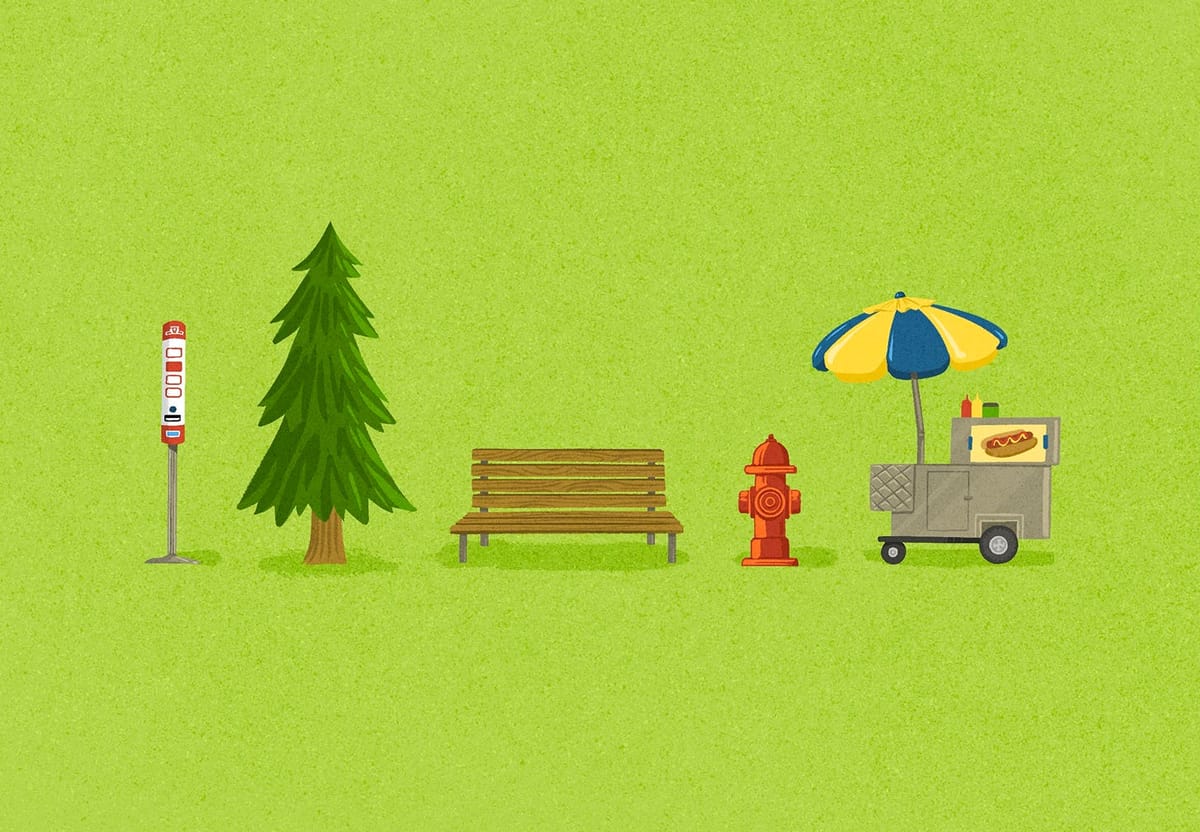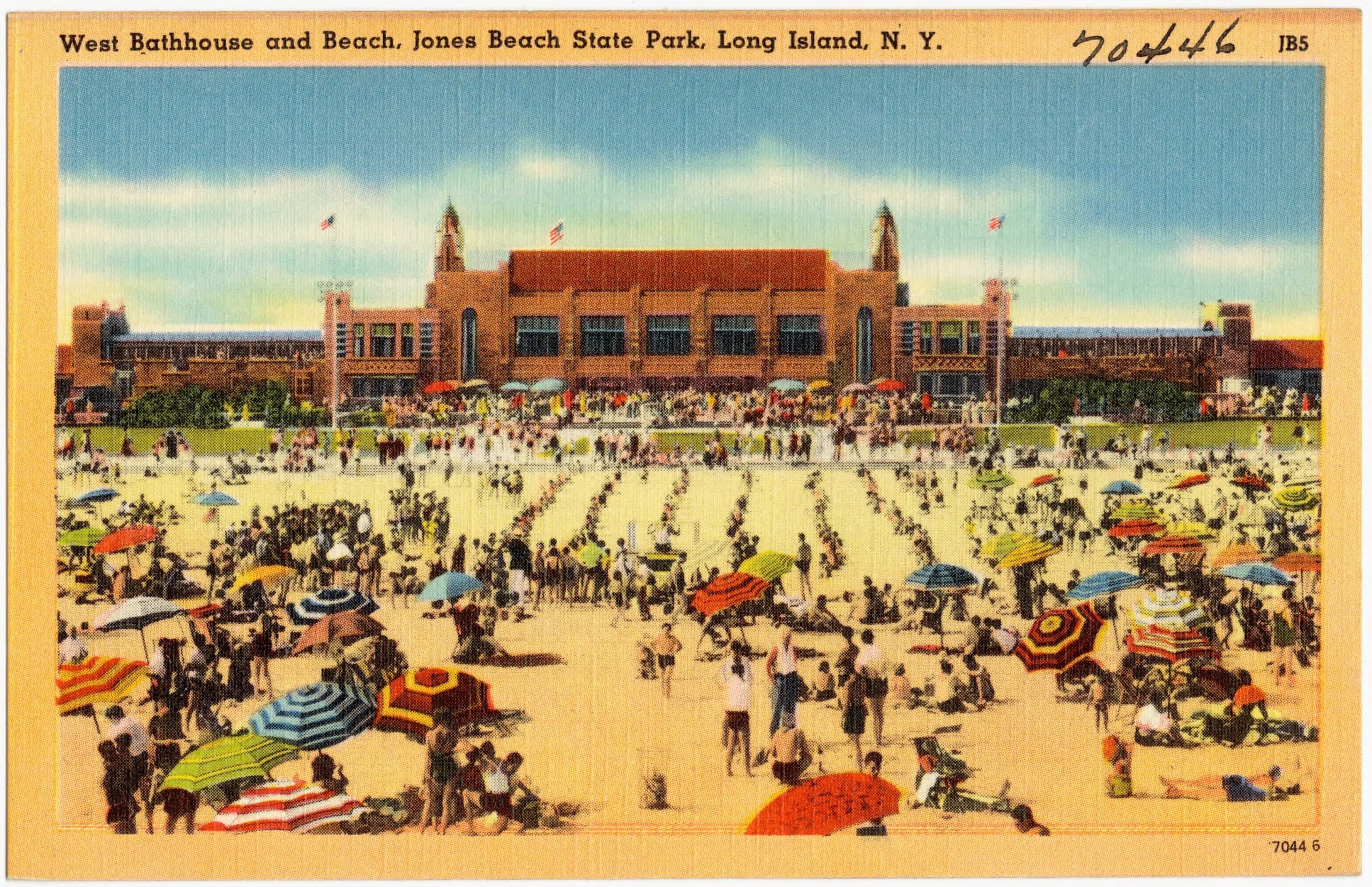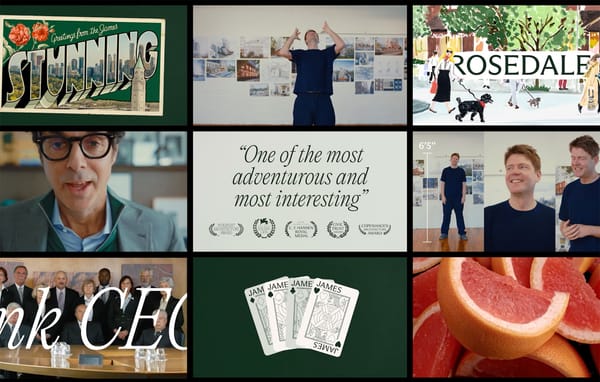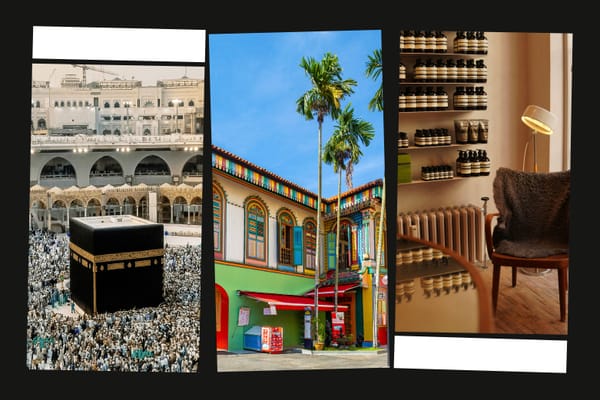Space Programs
What makes a public space truly public?

Hi everyone,
Last Friday’s post for supporters is now unlocked. In it, I recommend my favorite way to manage web bookmarks, which is free, lightweight, created by a solo developer, and encourages you to “ditch the FOMO.” Check it out.
Below, I discuss urban anthropologist Setha Low’s new book summarizing a career thinking about public space, highlight a new website cataloguing the library of a major postwar artist, and offer our weekly serving of good links to explore.
For those of you in Toronto, on Saturday, September 9, we at Frontier are hosting a meetup for users of Are.na (and others who want more mindful spaces on the internet). If you want to be alerted to the details, reply to this email and we’ll send them to you shortly.
Love all ways,
Brian
Space Programs
In recent years, Torontonians have wrangled over tent encampments and alcohol consumption in the city’s public parks; what to do with the prime waterfront property currently occupied by Ontario Place; and whether to allow Google subsidiary Sidewalk Labs to create a “smart” neighborhood just east of downtown. These debates over public spaces reveal our connections to place and to each other and prompt us to make explicit our many expectations and hopes. They reveal something essential about who we are and what we want to become.
Like rocks in a stream, these larger conversations punctuate the everyday encounters that make up our lives. Each time I leave my house, I decide whether to ride my bike or take public transit or drive, whether to buy something from a street vendor, or how closely to watch my kids in the local playground. Each choice impacts others, just as theirs affect me.
Such subtle, complicated interactions add up to what eminent anthropologist Setha Low describes as a public culture, something that, while crucial, is “often invisible and covert and only made manifest through the breaking of fragile norms and reactions to transgressions.” Her new book, Why Public Space Matters (buy in the US or Canada) draws on her five decades of field research to describe how public culture emerges and make her titular argument.
Despite the prevalence of public-space debates in cities and towns across the world, there is “no one accepted definition of public space,” she notes, not least because public space takes so many forms and those forms play host to innumerable and changing activities. Referring to her own fieldwork and that of several generations of students, Low reports from Jones Beach on Long Island, plazas in Costa Rica’s capital, recreational facilities in upstate New York, community gardens in Nairobi, markets in New York City’s outer boroughs, and the streets of Buenos Aires and Baguio City, the Philippines, among other places.
In Low’s telling, “the basic elements of a ‘good’ public space, one that enhances life and social relations, requires social encounters, a set of tacit rules and ways of being that are comfortable for most people, and an affective atmosphere of openness, exploration, or any structure of feeling that encourages people to be together with respect and dignity.” Despite their variety and prevalence, these good public spaces are everywhere under threat: from economic and political forces, from power grabs by those with comparative privilege, from ecological changes that can render them unusable.

This happens even with “good” intentions: in 2017, a redesign of Plaza de la Cultura, in San José, Costa Rica, aimed to “create a sano (clean, healthy) open area where people could walk to reach the nearby tourist hotel, the Teatro Nacional, and global franchises.” In the process, the “cultural and recreational activities of the youth and children who used to gather there were specifically prohibited,” and much else that had happened there became impractical. The effort transformed what had been public space into a vision of “‘culture’ that was tightly controlled and programmed to accommodate theatergoers, museum attendance, and consumption.”
Low argues for applying a social-justice framework to avoid such erasures. Adapting concepts originally developed for businesses and corporations, she argues that accounting for distributive justice, or equity of outcomes; procedural justice, or fair decision-making processes; interactional justice, informational justice, representational justice, and an ethic of care gives designers a “normative” baseline for assessing “what constitutes a ‘good’ public space.” You could quibble with the details, but the framework is admirably broad-minded and, according to Low, already being put to use.
People, even more than designers or governments, are the thread that holds together a place’s public culture. Their activities and activism determine the quality of a public space, and Low’s emphasis on the human side of her research—how people feel or perceive them—shows one way we can, as designers, attend to and try to resolve the conflicts they are unable to work out themselves. In a step-by-step walkthrough of an ethnographic project focused on Tompkins Square Park in New York City’s East Village, her team’s patient listening uncovers that even something as seemingly inoffensive as the height of fences had become a vector for “class conflict and an inability to work out equitable solutions.”
With its declarative title and copious references to her earlier books and her students’ dissertations, Why Public Space Matters feels like a capstone project. The sense of a baton being passed is made more explicit by her inclusion of an ethnographic toolkit: “With a toolkit, a desire for improving your local space, and a set of social justice and equality principles it is possible to transform your own neighborhood and city.” I’ve got my eyes on a confusing and dangerous intersection a few blocks from my house.
Note: for more on this book and on Daniel Knowles’s Carmageddon, which I discussed in the June 21 issue, see this episode of Monocle Radio’s Urbanist Book Club.

Browsing the Shelves
About a decade ago, what struck me when I visited 101 Spring Street in New York City, the house museum of the late artist Donald Judd, was not the austerity of the long, narrow rooms that held only a few artworks and design objects. That was to be expected from an artist known for the geometric precision of his sculptures in metal and wood. Instead, it was the small spaces with tall shelves, chairs, and a table tucked away in a corner, by the stairwell. Their welcoming intimacy made me think they were built for a dedicated reader.
Indeed, a few years earlier the Judd Foundation, which maintains Judd’s legacy and properties in New York and Marfa, Texas, had put online a digital catalog of Judd’s 13,000-volume personal library. That resource disappeared in 2016, but was relaunched two weeks ago with a refreshed design by CHIPS that emphasizes the floorplan and features photographs of every shelf.
The Judd Library website offers a fascinating peek into the idiosyncrasies of the artist’s mind, preserving not only the breadth of subjects that interested him—from Russian philosophy to seabirds to differential topology—but also the organizing principles he devised for the collection. For all that Marfa has evolved into an art-tourism destination, it’s still a long way from most of us, and this site is a model of how to preserve and share the intellectual fascinations of a major artistic figure.
Click here to visit the library site.
🔗 Good links
- 🥉 “I always felt very fortunate at Apple when we got to design the third or fourth version. Because if you’re paying attention, the third or fourth one is the beneficiary of an awful lot of learning.” –Jony Ive on the creative process
- 🧑🏻🤝🏻🧑🏻 “I still think getting our networks right … is critical to the work required to get more of us safely to the other side of the next ten, twenty, thirty years.” –Erin Kissane
- 🌻 273 websites nominated for the Tiny Awards, celebrating a “small, playful, and heartfelt web”
- 🏗️ Five Toronto architects discuss “What Is Architecture?”—the first of a five-part “Architecture Week” on public-television channel TVO
- 🕯️ “The remedy is the same as it always was: cultivate small, sturdy networks of affinity and interest. Connect them to each other. Keep them lit.” –Robin Sloan
- 🛝 “If it looks neat, people will want to take a photo with it. If it looks comfortable, people will want to sit on it. If it looks fun, people will play around on it.” –Cabel Sasser, on designing for humans





